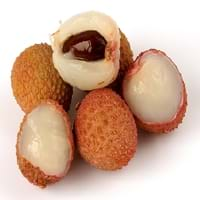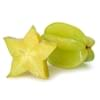Health Benefits
Arthritis treatment, Cholera treatment, Gout treatment, Heart care, Piles treatment, Scurvy treatment
Cancer prevention, Cures gastro-intestinal troubles, Heart care, Muscle pain relief, Prevents blindness from diabetes
General Benefits
Cures fever, Digestive aid, Eye care, Maintains healthy cholesterol level, Treatment of common cold
Boosts immune system, Digestive aid, Fights against infections, Helps in weight loss, Maintains healthy cholesterol level, Strengthens bones
Skin Benefits
Anti-aging benefits, Skin rejuvenation, Treatment of acne, Treatment of dark spots
Anti-aging benefits, Skin rejuvenation
Hair Benefits
Promotes longer and healthier hair, Treatment of dandruff
Promotes longer and healthier hair, Protects hair
Allergy Symptoms
Breathing difficulty, Coughing, Eye irritation, Hives, Inflammation, Nasal congestion, Runny nose, Skin rash, Wheezing
Coughing, Diarrhea, Headaches, Hives, Itching, Labored Breathing, Nausea, Runny nose, Swelling of mouth, tongue or lips, Vomiting, Watery eyes
Side Effects
Chances of sunburn
May cause abdominal pain, Diarrhoea, Mouth irritation, Throat irritation, Weight gain
Best Time to Eat
Along with meal, Best to drink warm water with lime on an empty stomach, Don't consume at night and before bed
As a snack in the late afternoon, Don't consume at night and before bed, Eat the fresh ones, avoid mixing with any other foods, don't eat after meal., Morning time (before lunch), Strictly avoid empty stomach
Vitamin B5 (Pantothenic Acid)
Vitamin C (Ascorbic Acid)
Vitamin K (Phyllochinone)
Calories in Fresh Fruit with Peel
Not Available
Not Available
Calories in Fresh Fruit without Peel
Calories in Frozen Form
Not Available
Calories in Dried Form
Not Available
Type
Citrus, Tree fruit
Tree fruit, Tropical
Season
All seasons
Spring, Summer
Varieties
Key lime, Persian lime, Kaffir lime, Desert lime, Palestine Sweet Lime, Mexican Sweet Lime, Mary Ellen Sweet Lime
Emperor fruit, Mauritiu, Sweet Heart, Brewster, Haak Yip and Bengal
Color
Green
Bright red, Pink red
Inside Color
Light Green
Greyish-white
Taste
Acidic, Sour
Crunchy, Juicy, Sweet
Origin
India
China, Indonesia, Philippines, Vietnam
Soil Type
Clay loam, Sandy loam
Alluvial, Loam, Well-drained
Climatic Conditions
Sunny, Warm to hot climate
Absence of strong wind, Cold, Dry, Without frosts
Facts about
- Lime is the called as the powerhouse of flavors.
- Fresh lime juice is so acidic that it can dissolve concrete.
- Limes are more fragrant and acidic than lemons.
- Persian limes are almost seedless and thorn less.
- The seed of Lychee fruit is toxic & can adversely affect the digestive system.
- This fruit gives a smoky flavor when eaten dried.
- This fruit is a symbol of love and romance in China.
Other Countries
Argentina, Brazil, India, Mexico
Australia, India, South Africa, Thailand, United States of America
Top Importer
United States of America
Hong Kong
Top Exporter
Mexico
China
Botanical Name
Citrus aurantifolia
Litchi chinensis
Synonym
not available
Nephelium litchi
Subkingdom
Tracheobionta
Tracheobionta
Division
Magnoliophyta
Magnoliophyta
Class
Magnoliopsida
Magnoliopsida
Order
Sapindales
Sapindales
Family
Rutaceae
Sapindaceae
Species
C. aurantifolia
L. chinensis
Generic Group
Citrus fruit
Soapberry
Difference Between Lime and Lychee
We might think that Lime and Lychee are similar with respect to nutritional value and health benefits. But the nutrient content of both fruits is different. Lime and Lychee Facts such as their taste, shape, color, and size are also distinct. The difference between Lime and Lychee is explained here.
The amount of calories in 100 gm of fresh Lime and Lychee with peel is Not Available and Not Available and the amount of calories without peel is 30.00 kcal and 66.00 kcal respectively. Thus, Lime and Lychee belong to Low Calorie Fruits and Low Calorie Fruits category.These fruits might or might not differ with respect to their scientific classification. The order of Lime and Lychee is Sapindales and Sapindales respectively. Lime belongs to Rutaceae family and Lychee belongs to Sapindaceae family. Lime belongs to Citrus genus of C. aurantifolia species and Lychee belongs to Litchi genus of L. chinensis species. Beings plants, both fruits belong to Plantae Kingdom.









